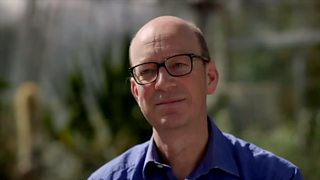Is there such a thing as a safe tan?
We’re always being told to cover up in the sun – but the sun does have its benefits as well. So how much IS too much sun exposure?
Currently, the NICE (National Institute for Health and Care Excellence) recommends very short periods of exposure for people with fair or light skin and slightly longer for those with darker skin types. This is to balance the risk of skin cancer with the need for our skin to produce the vitamin D that we need for healthy bones and teeth.
But do these guidelines go far enough - or too far?
Michael Mosley talks to two researchers with opposing views to get a better understanding of what factors we must all consider when choosing how long to spend in the sun.
Dr Richard Weller, a dermatologist from the University of Edinburgh, believes there is a growing body of evidence to show that the benefits of sun exposure may out weight the risks.

In fact, far from shortening life, there is some suggestion that exposure to sunlight may actually prolong your life. In the UK you are more likely to die of a stroke or a heart attack compared to skin cancer and evidence is emerging that shows sunlight can reduce the risk of these diseases. His research suggests this may be due to the skin releasing a chemical called nitric oxide when it is exposed to the sun. Nitric oxide plays an important role in controlling cardiovascular activity in the body and so this could potentially play a role in the benefits of sun exposure to health.
But what about the risks of skin cancer?
There are two types of skin cancer; melanoma and non-melanoma. Sunburn, particularly in childhood, is a risk factor for melanoma and so Dr Weller believes that avoiding sun burn, especially as a child, is very important. The mortality rate from melanoma is about 20%, making it the higher risk form of skin cancer.
Non-melanoma skin cancer affects about a quarter of a million people in the UK every year, but the death rate for this for of cancer is incredibly small. These cancers can simply be cut out and removed. In Denmark, research carried out on four million people suggests that life expectancy may actually be higher in people diagnosed with non-melanoma skin cancer, and Dr Weller believes this could be due to their sun exposure. It was also found that these patients are less likely to have had a heart attack when compared to their peers.
On the other side of the debate, Prof Charlotte Proby, Professor of Dermatology at the University of Dundee believes the NICE guidelines do not go far enough and that we should be even more careful about the amount of sun we expose ourselves to.

She disagrees with Dr Weller’s opinion on non-melanoma skin cancer not being less of a worry and suggests that if sun exposure could truly extend our lives we would see differences between mortality rates in countries with more sunshine. She believes that the differences we do see between Australian and British life expectancy may be more to do with lifestyle and diet than their exposure to sunshine.
Prof Proby agrees that exposure to sunshine is important for our vitamin D levels, but suggests that 5-15 minutes of sun exposure in the middle of the day is enough for fair to light-skinned to produce all the vitamin D they need. If you are of a darker skin tone however, you will need a little more time as darker skin types need more sunshine to produce vitamin D. Any more exposure to the sun than this, though, and you will not produce extra vitamin D and instead are .
Is there such a thing as a “safe” tan? Prof Proby says ‘no’, unless you have naturally dark skin that never burns. She recommends fair-skinned people wear sun block every day from mid – late March until the end of September regardless of the weather. She also recommends higher factors to provide you with the maximum protection against skin damage and ageing. She points out that freckles are a sign of permanent damage to the skin, and that if you freckle easily or have red hair you must always protect your skin from the sun.























